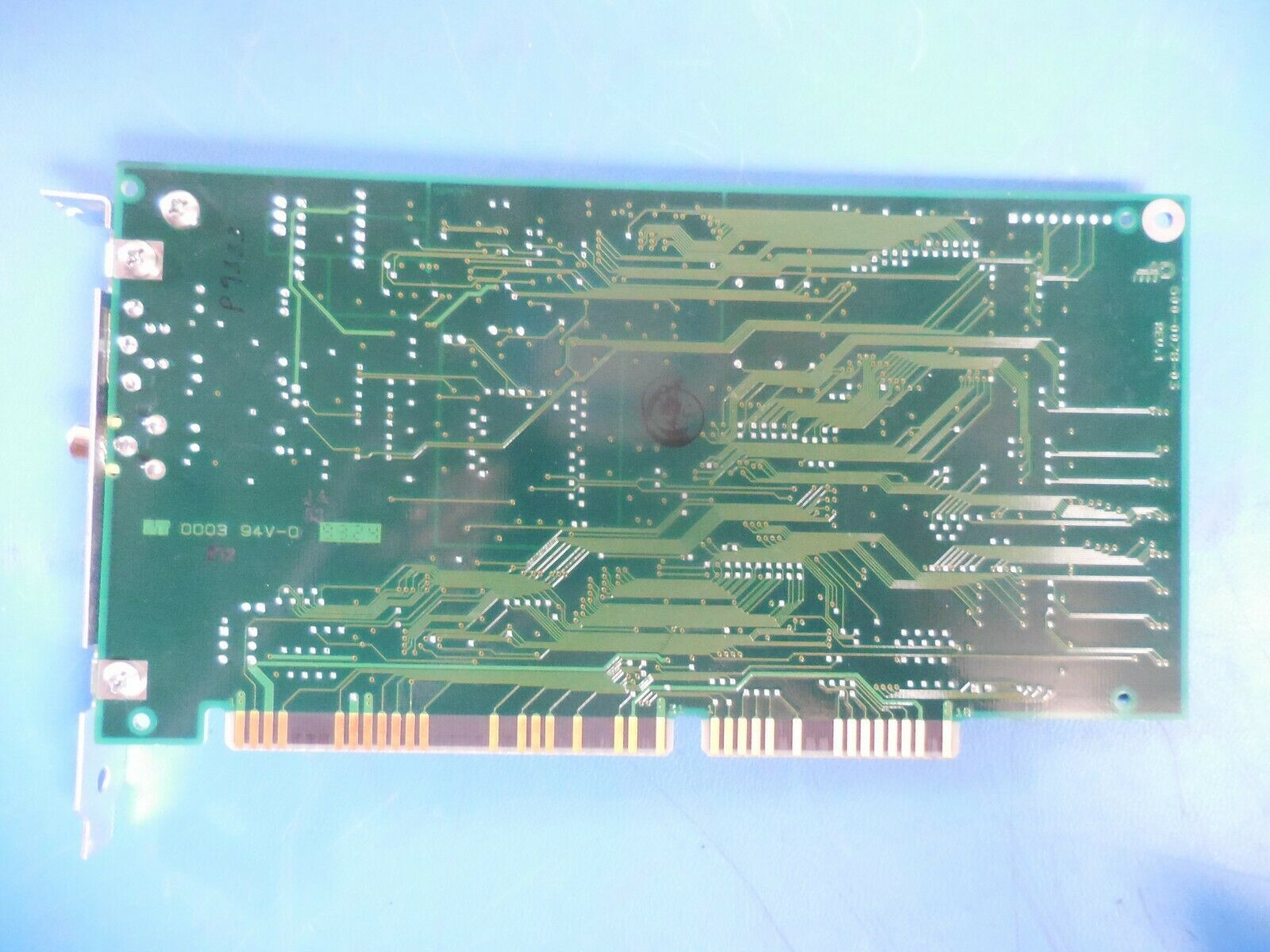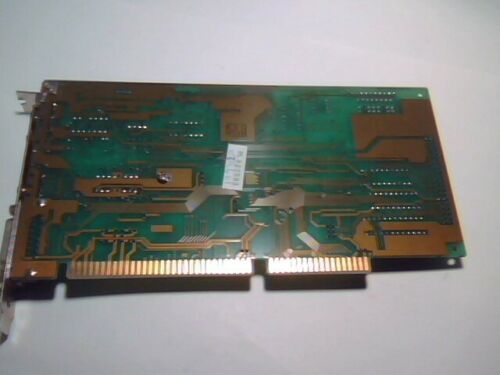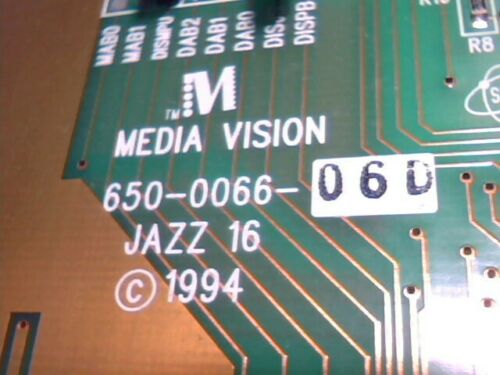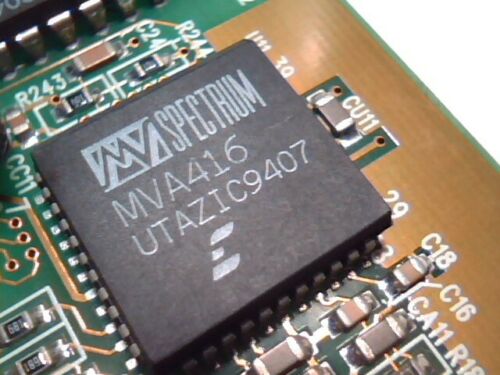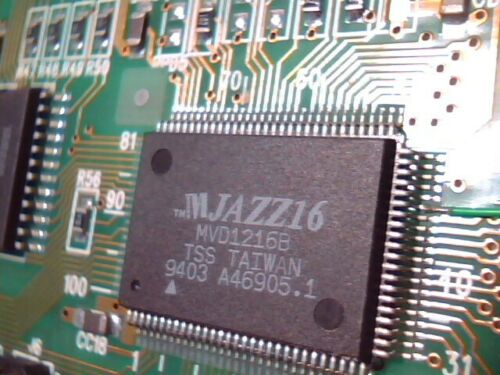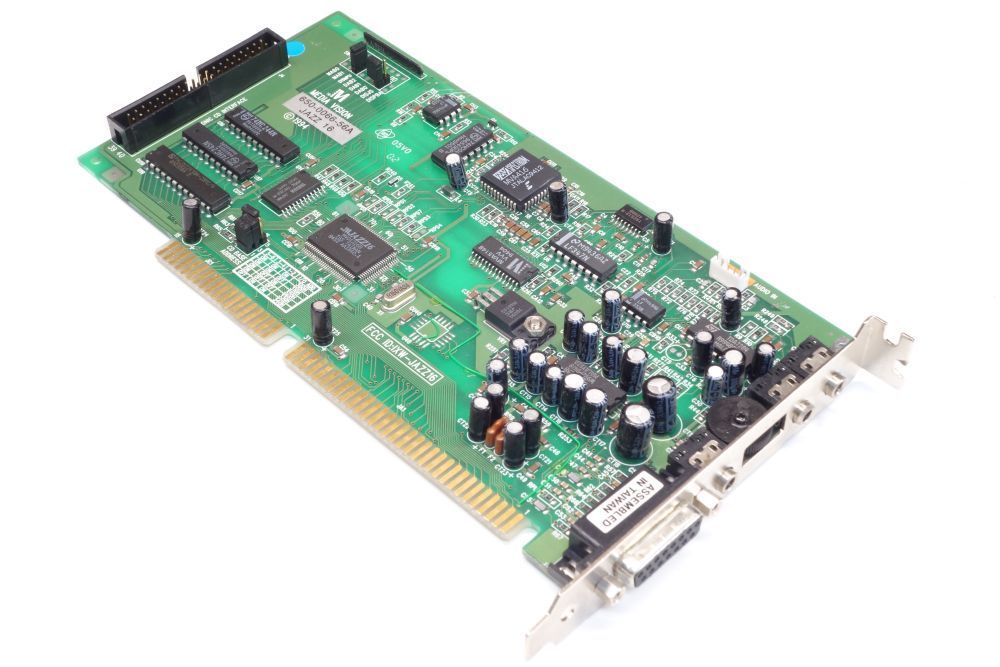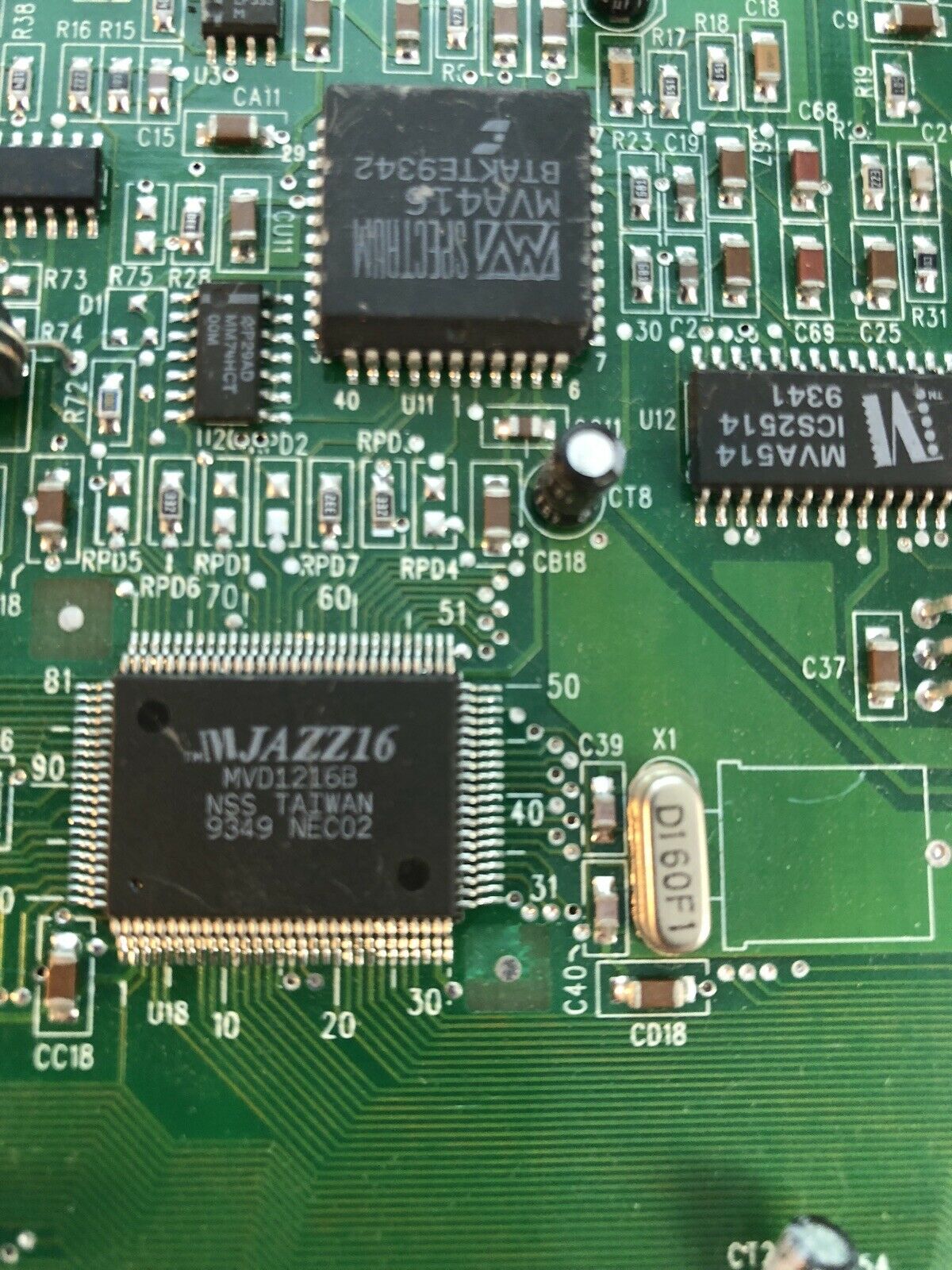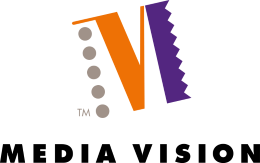 Media Vision
Media Vision
Founded in May 1990 by Paul Jain (of Paradise and Video Seven fame) and Tim Bratton, Media Vision (often incorrectly spelt MediaVision) were a sound card manufacturer during the early 90s, competing directly against Creative Labs and Aztech Labs. They also produced a number of graphics cards.
Media Vision were perhaps most famous for their Pro Audio Spectrum (PAS) cards, but they had numerous others over the Ad Lib and Sound Blaster era.
The PAS range did not have built-in support for Sound Blaster Pro or 16, but since most games of the mid 90's had direct support for the Pro Audio Spectrum (PAS) cards, this wasn't much of a problem.
For backward-compatibility, the 16-bit PAS cards did have an Ad Lib-compatible OPL3 chip for FM synthesis, and the 8-bit cards had an Ad Lib-compatible OPL2 chip. Furthermore, the Pro Audio Spectrum Plus and Pro Audio Spectrum 16 did include the same chip they used on their Thunder Board in order to provide standard Sound Blaster 1.5/2.0 support.
Click here for a large archive of PAS-related stuff.
Around late 1994/early 1995, Sigma Designs licenced the PAS16 under the brand name 'ReelMagic'.
Media Vision filed for bankruptcy protection in December 1994 after fraud allegations raised against its executives that year. In May 1996, the company was renamed Aureal Semiconductor, Inc. which later became popular for its A3D audio technology and its later incarnations, Vortex and Vortex 2.
There is a lot more information on the Pro Audio Spectrum 16 range in my Retro Review from November 2021.
Here are Media Vision's cards in chronological order:
| ISA Sound Cards | VLB Graphics Cards |
|---|---|
| Thunder Board (1991) Pro Audio Spectrum (1991) Pro Audio Spectrum Plus (1992) Pro Audio Spectrum 16 (1992) Pro Audio Spectrum 16 Basic (1993) Pro Audio Studio 16 (1993) Pro Audio Studio 16XL (1993) Pro Movie Spectrum (1993) Jazz, Jazz8 (1993) Pro Sonic 16 SCSI (1994) Pro 3D / Premium 3D (1994) Deluxe (1994) Deluxe 16 (1994) |
Pro Graphics 1024 (1993) Pro Graphics 1280 (1994) Pro Movie Studio (1995) |
Sound Cards
|
||
|
|
|
Never before have such sonic riches been within such easy reach of PC users. The Pro AudioSpectrum sports a 22-voice MIDI-compatible stereo synthesizer, as well as a sampler for recording and playing back high-quality digitized audio. You can connect a microphone and stereo sound source and run all output to a stereo amplifier. A SCSI interface even lets you hook up a CD-ROM drive to use as a CD player, while an optional MIDI connector supports MIDI keyboards.
With the software-controlled mixer, you can adjust the volumes of each sound source independently. Most impressive of all is that you can mix all sound sources and record them simultaneously as a digitized audio file. The on-board stereo sampler's 8-bit PCM (pulse code modulation) sampling at 44.1 kHz doesn't match the 16-bit sampling of studio equipment, but the final results are darn good.
The Pro AudioSpectrum also comes as part of Media Vision's $995 internal MPC upgrade kit, which includes a Sony CD-ROM drive with all necessary cables and drivers, Multimedia Extensions for Windows (free to present owners of Pro AudioSpectrum until December 31, 1991), and two free CD-ROM applications: Compton's Encyclopedia and Jones in the Fast Lane. Media Vision is also introducing a smartly designed $1,295 external MPC upgrade kit called the CDPC, which consists of an external case housing a CD-ROM drive and 100 watts of audio power delivered to small built-in high-fidelity speakers; the case unit is connected to the PC via a SCSI card. The CDPC also provides a joystick, extra speaker ports, full MIDI capability, and an analog mixer. It comes with the same free software as the internal kit.
Media Vision's product line and the Pro AudioSpectrum board in particular will help the PC finally overcome its long-standing reputation as something that should be seen but not heard."
PC Magazine, January 14, 1992
Pro Audio Spectrum Plus




Introduced in 1992
FCC ID: IXW-MVIPAS2
A 16-bit ISA card
MPU-401-compatible MIDI and Game port interface
Also had Thunder Board chipset for Sound Blaster compatibility
Part #: 650-0014
20-voice stereo FM synthesis based on Yamaha YMF-262 (OPL3). Sampling rate up to 44.1 kHz in stereo. Onboard mixer.
The Pro Audio Spectrum Plus is essentially a mid-point between the original Pro Audio Spectrum (PAS) and the Pro Audio Spectrum 16 (PAS16). Like the PAS16, the Plus is backwardly compatible with Ad Lib, Sound Blaster 1.5 and the original PAS. Where it's different is that it lacks the 16-bit digital audio sampling (recording) capabilities of the PAS16, so 22 kHz is where the Plus tops out for recording, though like the PAS16, it can playback at the full 16-bit audio frequency of 44.1 kHz.
Comparing the PAS Plus to the original PAS, the key difference is that the original PAS had two OPL2 chips - the PAS Plus combined these into a single OPL3 chip. This results in incorrect music when playing games designed specifically for the two OPL2 chips. An example of this is Sierra Online's SCI1-based games. From SCI1.1 games, Sierra launched both 8-bit and 16-bit drivers for the PAS range.
As I understand it, the PAS Plus also needs to be configured for Sound Blaster mode - it is not enabled by default.
SCSI interface for CD-ROM.
DOS Drivers
 Pro Audio Spectrum 16
Pro Audio Spectrum 16 




Introduced in May 1992
FM synthesizer: Yamaha OPL3
Chipset: MVD101
Mixer Chip: MVA-508B
Part #: 650-0022, 650-0032, 650-0042, 650-0044,
650-0060, 650-0082, 650-0097
FCC ID: IXW-PAS16P, IXW-PAS16, ICW-PAS16NS, IXW-LMSI2
Price: $99 (Jun 1994)
Launched exactly 1 year after the original Pro Audio Spectrum, the Pro Audio Spectrum 16 incorporated a single Yamaha OPL3 FM synthesizer chip, MPU-401-compatible MIDI and Game port interface, SCSI interface, and it also had the ThunderBoard chipset for Sound Blaster 2.0 compatibility. Its best feature was its ability for 16-bit CD-quality recording and playback at 44.1 kHz. The card was almost completely jumperless which was pretty rare at the time - it can configure itself completely via software.
At its launch, it was ahead of Creative, who were yet to release the Sound Blaster 16, which would match the PAS 16's specs.
Because of the built in SCSI CD ROM interface, the card would often be bundled with expensive multi-media packages which included a CD-ROM drive. Media Vision bundled this card in their own Super Deluxe Multimedia Kit in late 1994 which also came with an internal Sanyo CDR H93MV double-speed SCSI CD-ROM drive, 4-watt speakers and a variety of software titles. In March 1995, this multimedia kit sold for £319.
The 16-bit PAS card when sold alone was priced at the same point as Creative's 8 bit Sound Blaster Pro making it a popular choice for non-gamers.
If the main MVD101 chip is revision C or earlier, the MPU-401 interface supports only the proprietary Media Vision MIDI interface (not widely supported), whereas revision D and later also supported MPU-401 UART mode. Sadly this does suffer from the hanging note bug.
The card can be noisy in operation, so it is advised to use the mixer utility to swich off any unused inputs or outputs (set volume to 0). It is also advised to change jumper J16 to disable DMA sharing, which does not play well on the ISA bus.
Not backward-compatible with Pro Audio Spectrum, nor is it compatible with Sound Blaster Pro - only straight Sound Blaster (mono).
A version of this card was also produced with a Philips CD-ROM interface. FCC ID was IXW-PAS16P, and it has a DIGBIE LMS chip in the lower left corner which is the "LMSI" interface.
There was also a Pro Audio Spectrum 16SL (Part #:650-0032-04I, FCC ID: IXW-PAS16SL). ![]() This came with a Sony CD-ROM interface (the official name of this was SLCD but was rarely used), hence the 'SL' suffix.
This came with a Sony CD-ROM interface (the official name of this was SLCD but was rarely used), hence the 'SL' suffix.
There is a lot more information on the Pro Audio Spectrum 16 range in my Retro Review from November 2021.
DOS, Windows, PAS-16 Utilities
More Images



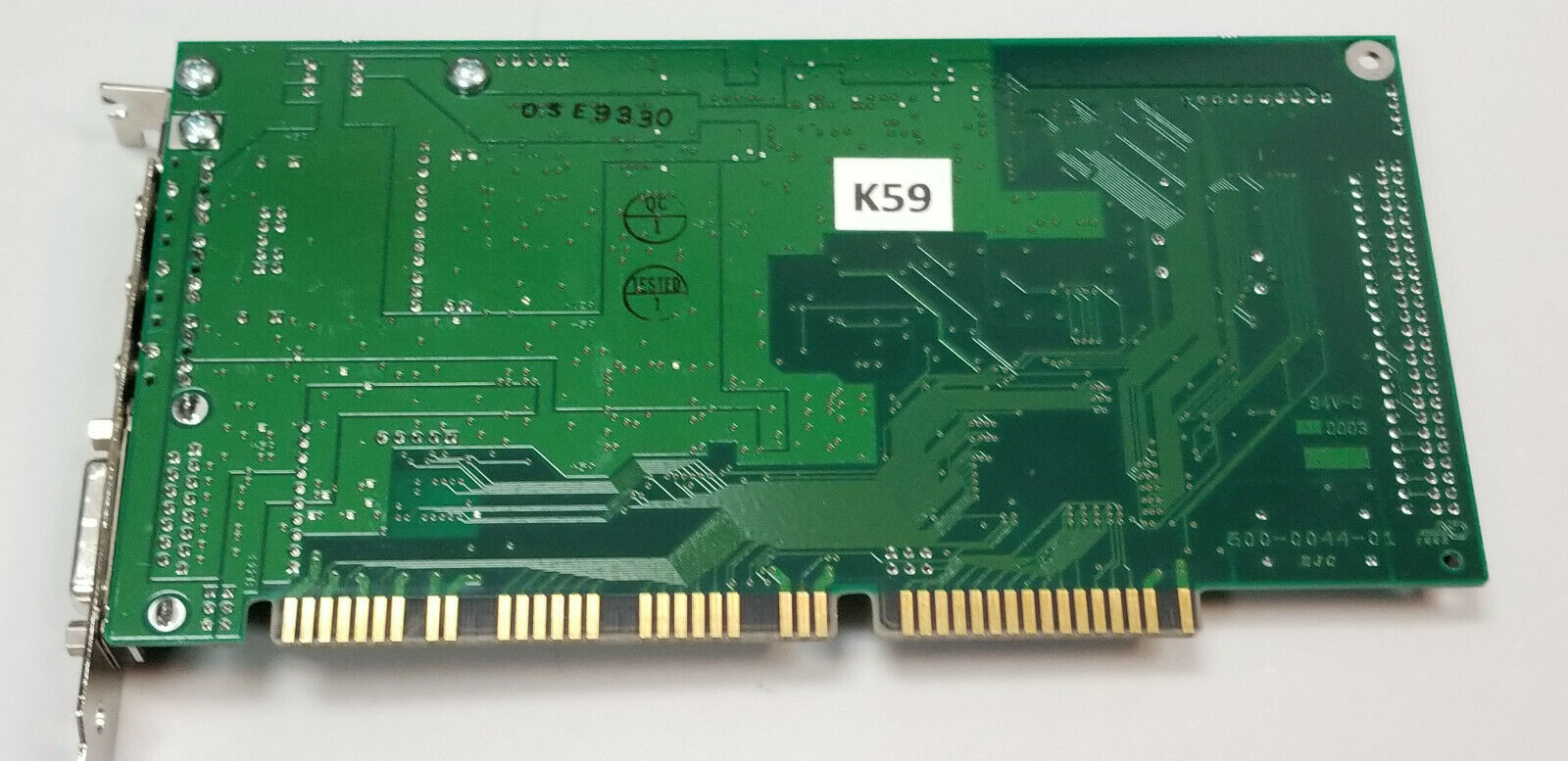
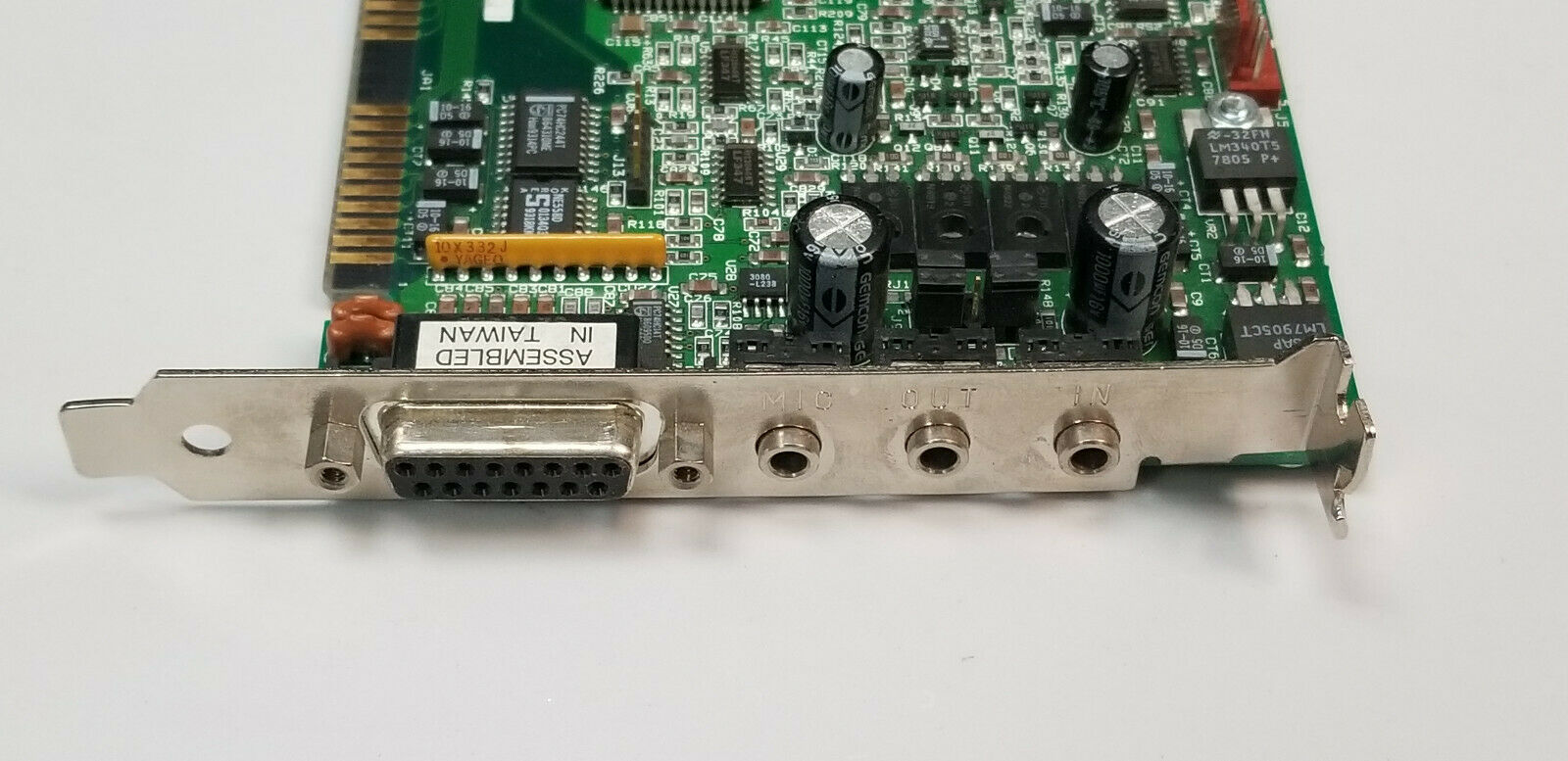
.png)
.png)
.png)
(Credit to Dusko Marincic for the 3 images above of his PAS16 650-0022-01C card)
.png)
.png)
.png)
(and these three are of Dusko's extremely rare LMSI interface PAS16, 650-0082-03B card)
Pro Audio Spectrum 16 Basic 




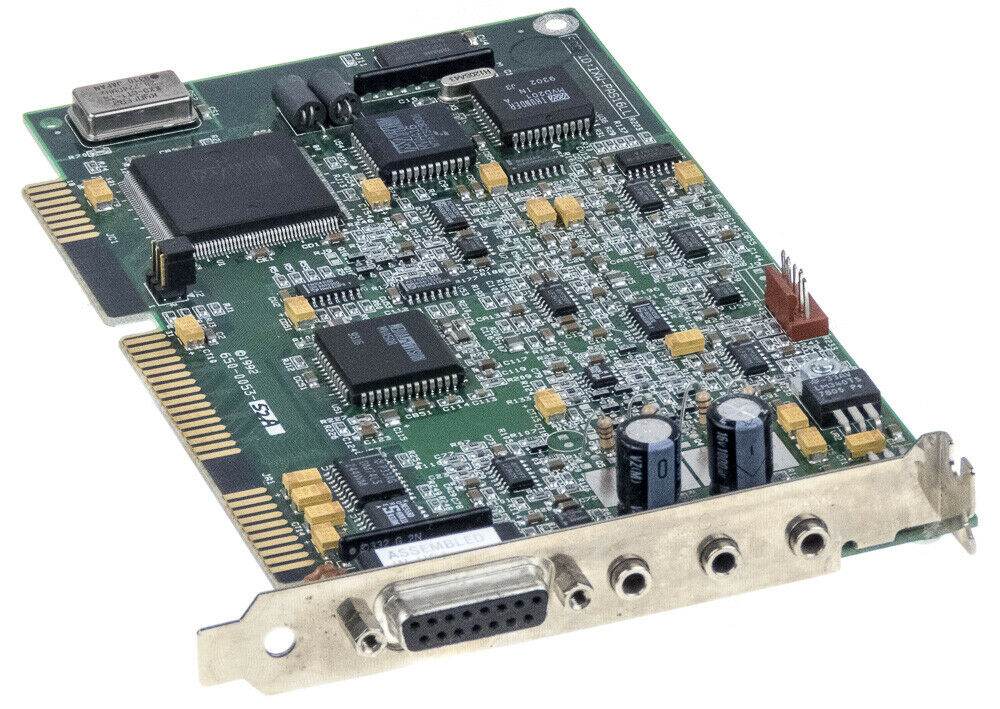
Introduced: 1993
FM synthesizer: Yamaha OPL3
Chipset: MVD101
Mixer Chip: MVA-508
Signal to Noise Ratio: -70.9 dB
Model #: 650-0053-52A
FCC ID: IXW-PAS16LL
Price: $199 (list price at launch)
, $129 (Nov 1993, PAS Basic), $105 (Nov 1993, Logitech SoundMan 16), $79 (Jun 1994)
This is the only Media Vision card that did NOT have a CD-ROM interface, hence the "Basic" moniker. Aside from that omission, it's the same as the ProAudio Spectrum 16. It has an MPU-401-compatible MIDI and Game port interface.
This card was also sold as the Logitech SoundMan 16.
This card is born to run games. It doesn't clutter itself with extra bundled software, CD-ROM interfaces, or thick manuals to wade through. The drawback is that it uses the Media Vision chipset, so if the reader dislikes these chipsets due to problems encountered with Sound Blaster compatibility, this may not be his of her card of choice. On the other hand, more and more companies are supporting the Media Vision chipset directly. Also, if one already has a CD-ROM host or SCSI drive, this card is easier to install (there are software configurable jumpers and no SCSI or proprietary CD-ROM hosts to conflict with existing hardware).
Though the documentation is a bit sparse, it should get the average user up and running with a minimum of difficulties."Computer Gaming World, October 1993
.png) Pro Audio Studio 16
Pro Audio Studio 16 




Introduced: Late 1993
Mixer Chip: MVA-508B
Signal to Noise Ratio: -76.4 dB
MPU-401-compatible MIDI and Game port interface
SCSI interface for CD-ROM
Part #: 650-0060-02, 650-0060-03, 650-0060-52, 650-0060-53, 650-0060-60
FCC ID: IXW-PAR
Price: $349 (1993), £265 (Sep 1993), $119 (Jun 1994), £122 (Mar 1995)
A Pro Audio Spectrum 16 card bundled with voice recognition s/w and microphone.
In common with many sound cards, the midi port doubles as a joystick port, and the card also carries a scsi cd rom interface. Software supplied includes a quick start installation program and multimedia guided tour, ExecuVoice voice recognition software, Monologue for Windows, a text-to-speech package,MIDIsoft Recording Session, a Windows based midi sequencer, and Sound Impressions, a professional digital audio editing package" PC Zone, September 1993
Dusko Marincic got in touch to let me know that his Pro Audio Studio 16 has the reverse stereo issue that is common in a number of ISA sound cards. On this card, it is evident both from the Line Out and Speaker Out (amplified) sockets. He also has a PAS16 card, and it does *not* suffer from the reverse stereo issue.
He tested the Pro Audio Studio 16 with both the PAS16 audio option in Descent's setup utility as well as the Yamaha OPL3 audio option - both exhibited reverse stereo on this card.
Credit for the images of this Pro Audio Studio 16 also go to Dusko.
More Images
 Pro Audio Studio 16XL
Pro Audio Studio 16XL 





Introduced: Late 1993
Mixer Chip: MVA-508B
MPU-401-compatible MIDI and Game port interface.
SCSI interface for CD-ROM.
This was a package solution from Media Vision, comprising the Pro Audio Studio 16 card and bundled software, and their wavetable daughterboard, Pro Wave (Part #600-0120-01). The Pro Wave had a high-quality synth from Korg.
 Pro Movie Spectrum 2.0
Pro Movie Spectrum 2.0
Launched: 1993
Interface: 16-bit ISA
Main Chip: MVV251A, MVV351B
FCC ID: IXW-PMS2.0
Prices: $285 (Nov 1993)
Not a sound card, the ProMovie Spectrum was a video capture card.
More Images
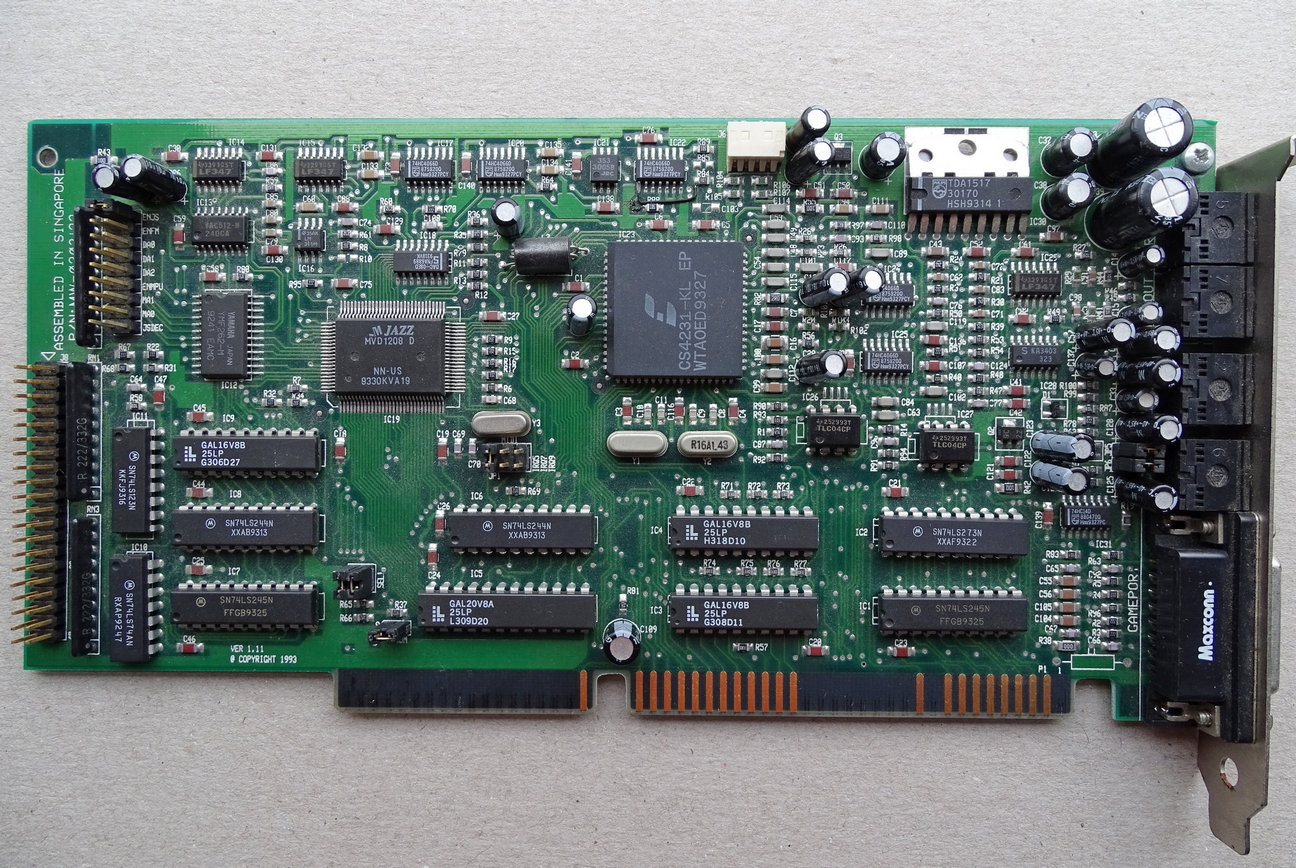 Jazz, Jazz8
Jazz, Jazz8 



Introduced: 1993
FM Synth: Yamaha YMF262-M (OPL3)
Chipset: Jazz8 (MVD1208)
Wavetable Header: Some models
Media Vision's new chipset for 1993, Jazz8, was an Ad Lib, Sound Blaster, and Sound Blaster Pro compatible. It was *NOT* compatible with the earlier Pro Audio Spectrum line.
The Jazz8 chipset can be found on the following cards:
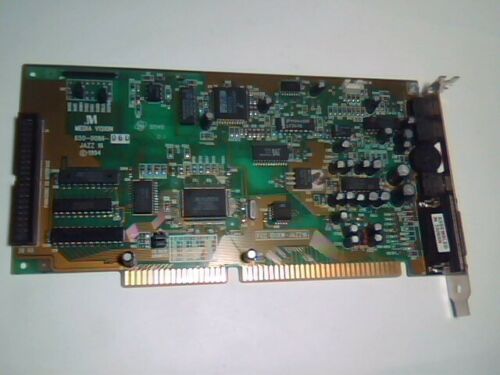 Jazz16
Jazz16 



Introduced: 1993
FM Synth: Yamaha YMF262-M (OPL3)
Chipset: Jazz16 (MVD1216)
Mixer Chip: MVA-416
Wavetable Header: Some models
CD-ROM interface: IDE or Panasonic (IXW-JAZZ16), Sony/Panasonic/Mitsumi (KRN3261).
Model #: 650-0066-06D
FCC ID: IXW-JAZZ16, KRN3261
Media Vision's new chipset for 1993, Jazz16, was an Ad Lib, Sound Blaster, and Sound Blaster Pro compatible. It was
*NOT* compatible with the earlier Pro Audio Spectrum line.
This board has hardware volume control via a dial on the backplate, like the early Sound Blasters.
Media Vision licenced their Jazz16 chipset to a number of OEMs, including Gateway 2000 and KTL (FCC IDs starting with KRN, e.g. KRN3261). It was also sold to Quickshot for their QS805, to Identity Systems Technology with their IDCDKIT1 who branded their version of the card 'CHIC', and to Octek who called theirs the 'Octek MV-16'.
The Jazz chipset has a bug where the MIDI buffer is too small, so it would drop data once in a while resulting in a missed note or sometimes a stuck note. This made using either the MIDI port or the wavetable header next to useless.
A "3D Pro" version of the Jazz16 came bundled with a Korg wavetable daughterboard.
DOS driver incl. CD-ROM support
More Images
 Pro Sonic 16 SCSI
Pro Sonic 16 SCSI 



Introduced: 1993
FM synthesizer: Yamaha YMF262-M (OPL3)
Chipset: Jazz16 (MVD1216)
Mixer Chip: MVA-416
Wavetable header: None
Model #: 650-0087-03, 650-0087-53, 650-0087-54
FCC ID: IXW-JAZZ16S
Known Revisions: A , C
Combines the Thunder Board chipset with the Jazz16 chipset (which is sort-of Sound Blaster 16 compatible). Not compatible with Pro Audio Spectrum line.
SCSI interface for CD-ROM.
This board has hardware volume control via a dial on the backplate, like the early Sound Blasters.
The Jazz chipset has a bug where the MIDI buffer is too small, so it would drop data once in a while resulting in a missed note or sometimes a stuck note.
According to the Microsoft Sidewinder 3D Pro documentation, the Pro Sonic is one of several boards that do not provide full game port functionality, i.e. the Sidewinder (as perhaps other peripherals) will not function on them.
More Images
 Pro 3D / Premium 3D
Pro 3D / Premium 3D 




Introduced: 1994
Chipset: Jazz16 (MVD1216).
Wavetable header.
Ad Lib, Sound Blaster, and Sound Blaster Pro compatible.
*NOT* compatible with Pro Audio Spectrum line.
Faster SCSI CD-ROM interface.
Mixer Chip: MVA-508B
Part #: 650-0111--1 (Premium 3D SCSI), 650-0098-05 (Premium 3D Multi CD)
FCC ID: IXW-JAZZ16S
Price: $199 (1994), $145 (Jun 1994 - Premium 3D SCSI-2), $265 (Jun 1994 - Pro 3D), £259 (Mar 1995 - Pro 3D SCSI-2)
The Pro 3D and Premium 3D cards built upon the Pro Audio Spectrum 16 line by offering SRS surround sound technology, a "supported" Wave Blaster header, Sound Blaster 2.0 digital and FM compatibility, and support for VESA's VBE/AI sound standard initiative. The optional Media Vision Korg Pro Wave wavetable daughterboard upgrade sold for $199.
The MVA-508B mixer chip was not Sound Blaster Pro mixer-level compatible - this would be rectified in a later card, the Deluxe.
The Premium 3D card was also bundled in Media Vision's Premium Deluxe Multimedia Kit in late 1994. It sold for $599 along with the Media Vision Reno external double-speed SCSI CD-ROM drive and software titles including Compton's Interactive Encyclopedia, Home Survival Toolkit, Iron Helix, Kid's Zoo, Mayo Clinic Family Health Book, and Return to Zork. In March 1995, this multimedia kit sold for £489.
In DOS, the Pro 3D and Premium 3D do not support 16-bit digital playback outside of the VESA driver interfacing.
There was also a Premium 3D Multi-CD version of this card which replaced the SCSI header with Sony, Panasonic and Mitsumi CD-ROM headers.
Also sold as the Pro [Audio] 3D, which consisted of the Premium 3D card bundled with a Korg "Pro Wave" wavetable daughterboard (part #650-0120-01). This wavetable board came with a 4 MB sample ROM and had reverb and chorus effects processing. The card came with a slightly cut-down version of MidiSoft's Sound Impression Windows software (the same one bundled with the Roland RAP-10 sound card), which allows you to record and edit your own tracks and store them in a WAV file. Also bundled with the Pro 3D was MidiSoft's Recording Session for sequencing, Monologue, a text-to-speech application, and Dragon's Talk-To Plus which allows you to control Windows using your voice.
Media Vision Inc. last week announced a family of sound boards as well as its plans to drop prices on products already in the channel.
To create a fuller sound the three boards slightly delay the sounds coming from the right speaker. Media Vision has dubbed the effect '3-D sound.'
The Media Vision Premium 3-D SCSI-2 card lists for $199 and includes a 2.5MB-per-second (Mbps) SCSI-2 adapter that handles burst rates as high as 5 Mbps.
Also listing for $199 is the Media Vision Premium 3-D Multi CD sound card, which comes with interfaces for Sony, Panasonic, and Mitsumi CD-ROM drives. Both cards can be upgraded with a $199 wave-table synthesis module that will ship in the second quarter.
For users who want wave-table synthesis already installed on the board, Media Vision will ship the Media Vision Pro 3-D for $379.
Other companies create more sophisticated but similar 3-D sound effects with delays and pitch changes that fool the ear into thinking the sound is emanating from many locations, said Satish Gupta, vice president of strategic marketing. However, those boards require software companies to write the effects into their software, he said. Media Vision's boards do not require specially written software to create the sound effect.
The boards will ship in April as stand-alone cards and in some of the company's multimedia upgrade kits.
The three cards feature 16-bit stereo and 20-voice FM synthesis. They come with several programs, including a MIDI sequencer and Dragon Systems voice-recognition software.
Media Vision licenses the same 3-D sound technology from SRS Labs, Inc. that is used in RCA and Sony televisions.
The company also announced last week that it will drop prices on already shipping products. In addition, a forthcoming multimedia product will be delayed into the second quarter.
The price cuts, along with the product delay, will result in a first quarter loss, Media Vision officials said, adding that the cuts were in response to competition from other vendors. "
Info World, 4th April 1994
According to the Microsoft Sidewinder 3D Pro documentation, the Premium 3D is one of several boards that do not provide full game port functionality, i.e. the Sidewinder (as perhaps other peripherals) will not function on them.
Rich Heimlich said this of the Pro 3D card: "One of the best single card solutions available. Includes nice creature comforts like built-in SRS and a basic effects processor. It's also SB-Pro compatible. My biggest problems are the lack of a supportable 16-bit mode and the need to use a 6k TSR. Should prove to be a nice Windows 95 card. The Premium 3-D is the same card without the Korg AI2-based daughterboard.". His scores were 7.5 for digital quality and 7.0 for music quality (out of 10).
More Images
 Deluxe
Deluxe 



Chipset: Jazz16 (MVD1216)
Wavetable header
Ad Lib, Sound Blaster, and Sound Blaster Pro compatible
*NOT* compatible with Pro Audio Spectrum line.
Faster SCSI CD-ROM interface.
Mixer Chip: MVA-514
Part #: 650-0123-01
In the Deluxe which was a follow-up to the Premium 3D card, the mixer chip, MVA-514, was less feature-rich than the earlier MVA-508B of the Pro 3D/Premium 3D, but it did add Sound Blaster Pro mixer-level compatibility. It dropped the SRS surround sound technology.
The Wavetable header could also be used with the Korg Pro Wave (MV part #650-0120-01), just like the Pro 3D and Premium 3D cards (see above). This used the 4 MB Korg AI2 soundfonts. A Deluxe plus the Korg DB would cost $226 when new.
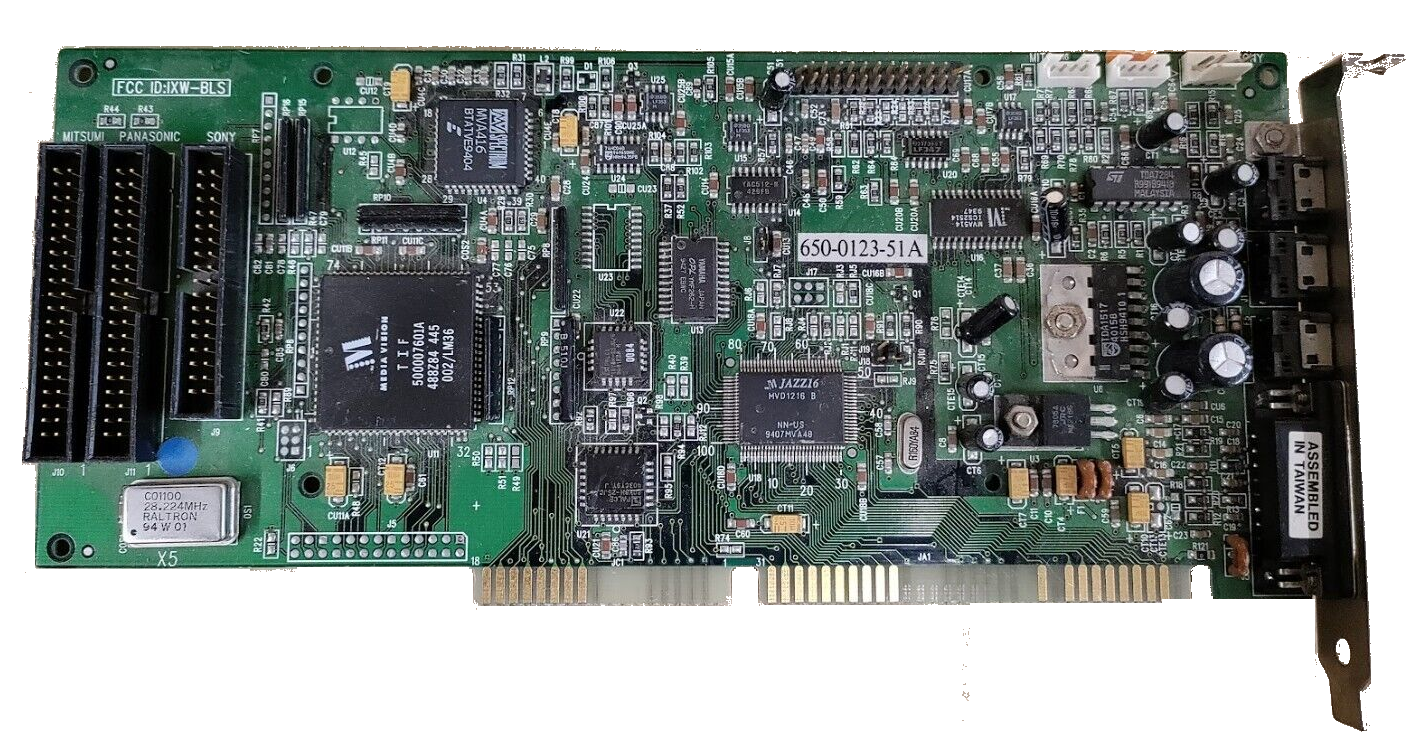 Deluxe 16
Deluxe 16 



Chipset: Jazz16 (MVD1216)
Wavetable Header: Yes
CD-ROM interface: Mitsumi, Panasonic, and Sony
Mixer Chip: MVA-416
FCC ID: IXW-BLS
Part #: 650-0123-51
The Deluxe 16 was very similar to the Deluxe but had the three non-IDE CD-ROM interfaces present instead of SCSI, and reverted back to the earlier MVA-416 mixer chip of the original Jazz16 card, Pro Sonic 16.
Graphics Cards


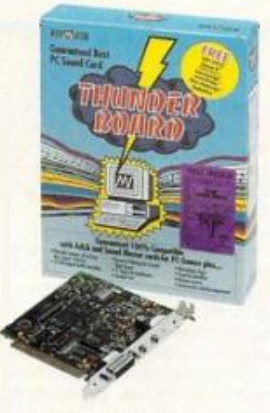
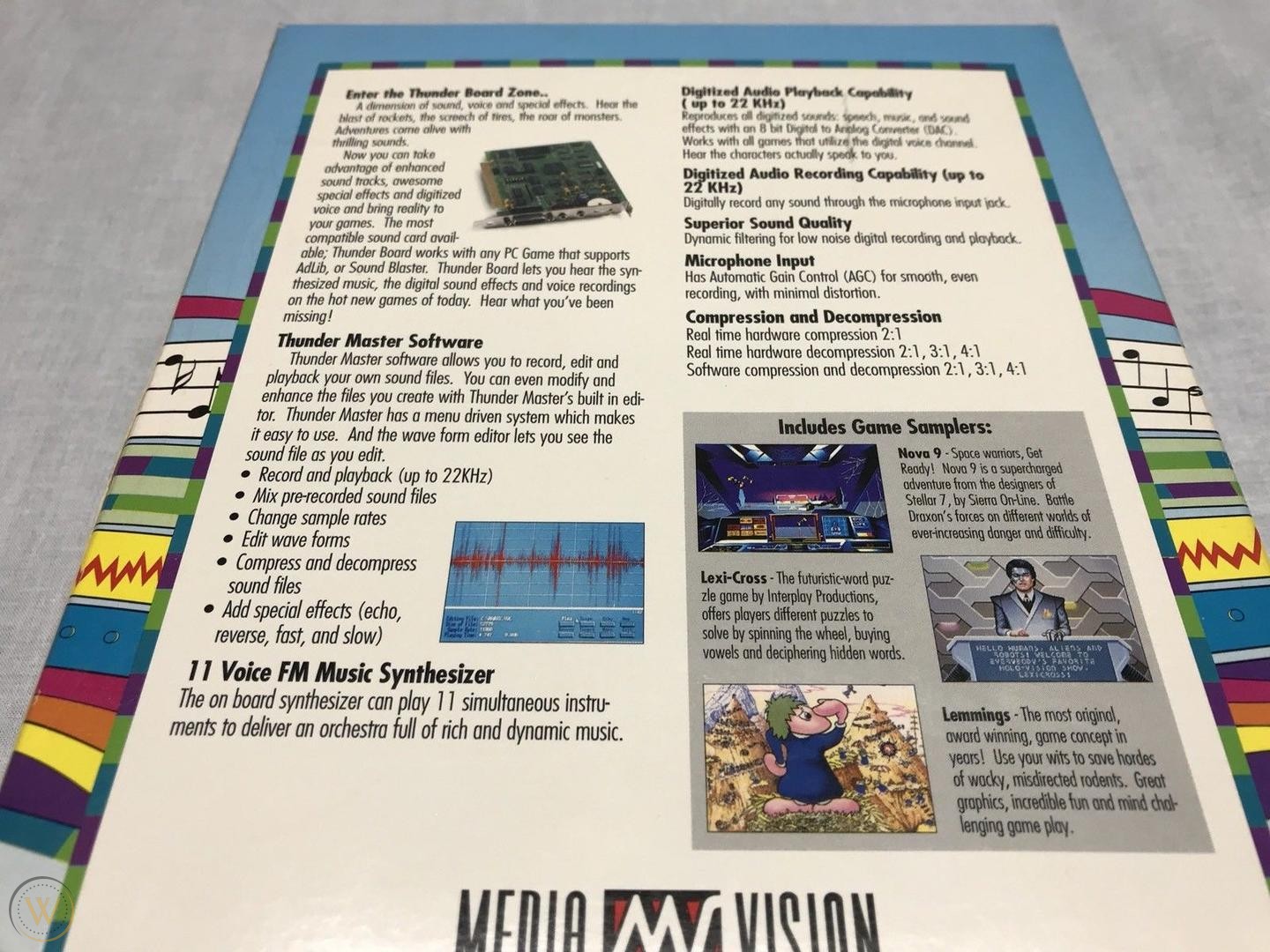
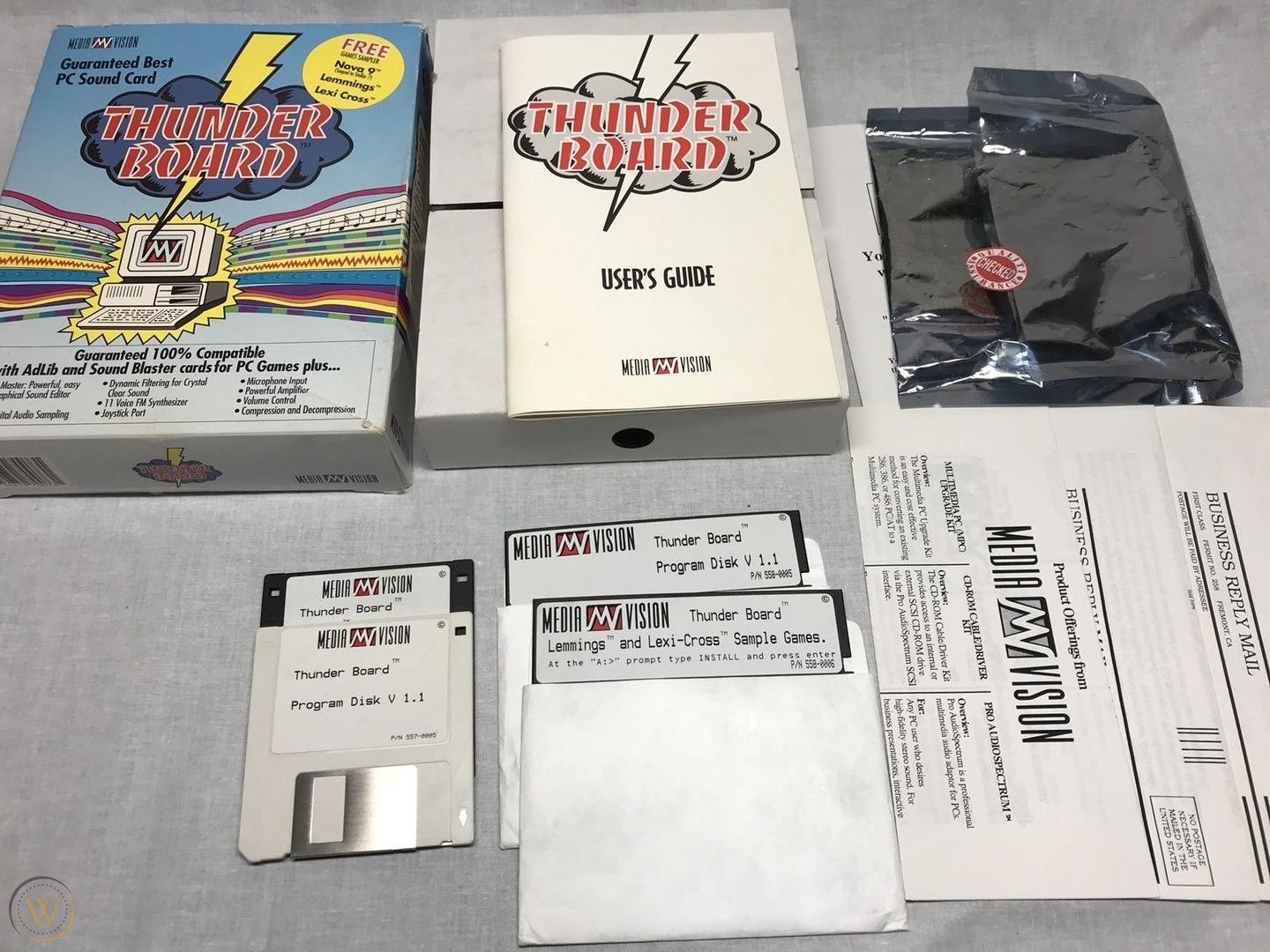

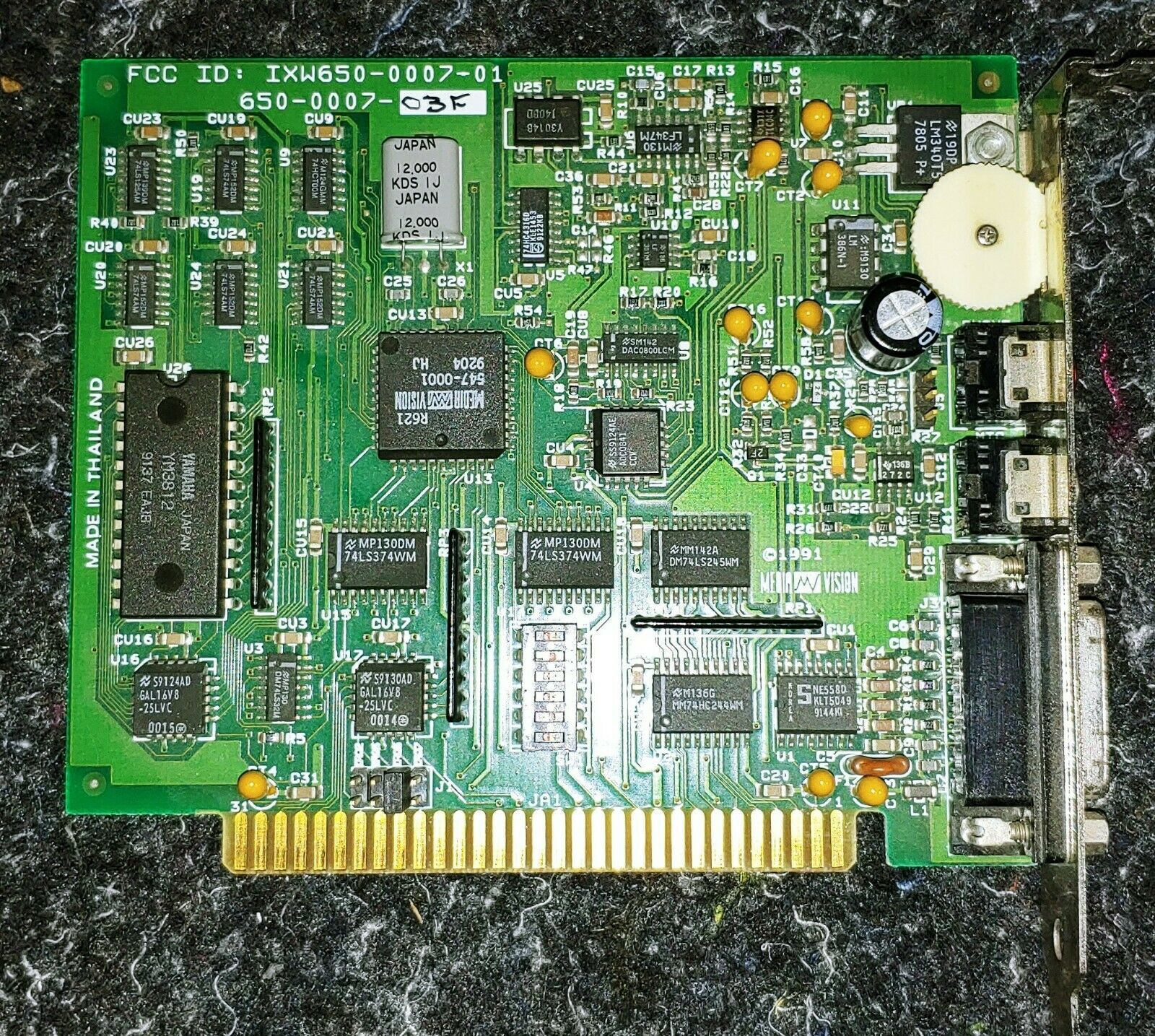
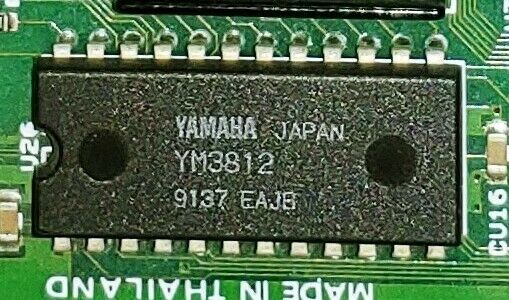



.png)
.png)

